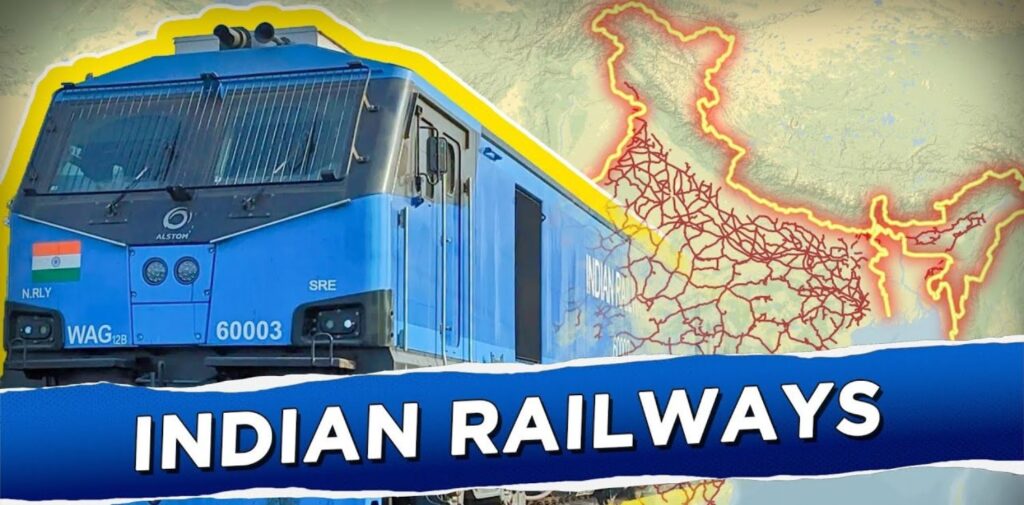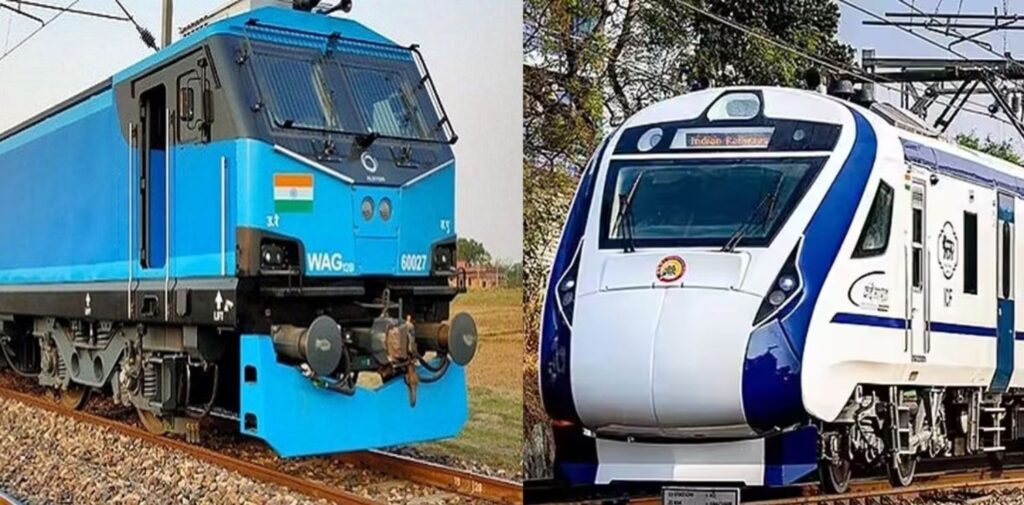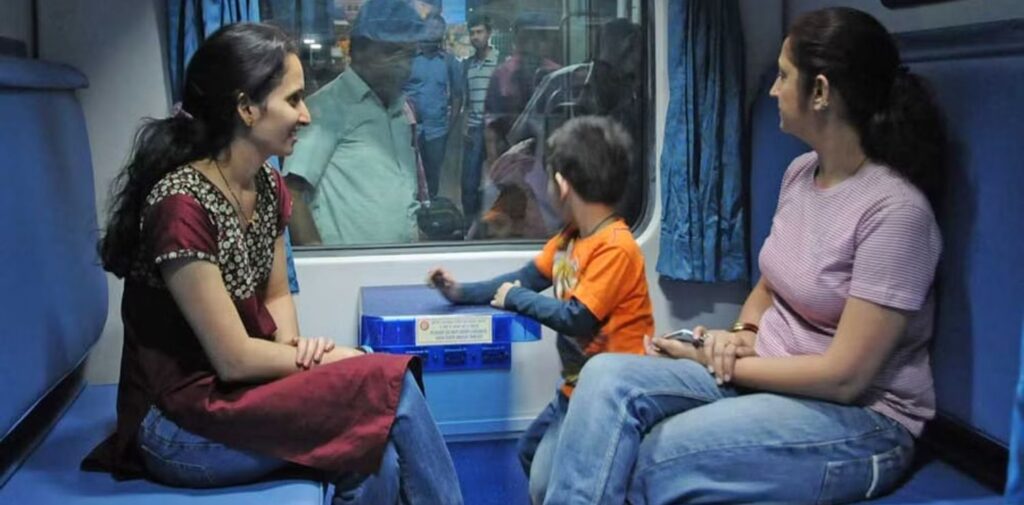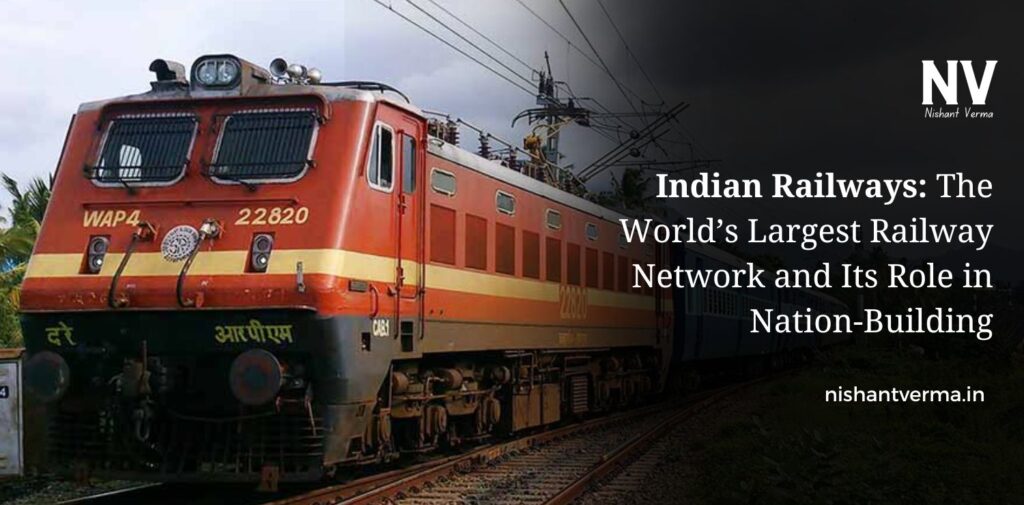Indian Railways stands as one of the greatest achievements in the history of modern transportation. Not only is it the largest railway network in the world, but it has also played a pivotal role in shaping the socio-economic landscape of India. Its impact is felt in every corner of the country, from bustling cities to the remotest villages. The story of Indian Railways is intertwined with the story of India’s growth, progress, and unity.
Birth of Indian Railways
The idea of introducing railways in India was conceived during the British colonial rule. The first train journey in India took place on April 16, 1853, when a steam locomotive travelled from Mumbai (then Bombay) to Thane. This was the beginning of what would become the world’s largest railway network, stretching across the length and breadth of the country.
In the early years, the main purpose of the railways was to serve the British Empire by transporting goods, especially raw materials, to ports for export. However, over time, railways became a crucial tool for economic development and played an essential role in connecting diverse regions, cultures, and people within India.

Growth and Expansion of Indian Railways
After Independence in 1947, the newly formed Indian government realized the importance of a well-connected transportation system. Indian Railways was nationalized and rapidly expanded to meet the demands of the growing population and economy. Today, it has become a behemoth, with more than 68,000 kilometres of tracks, over 7,000 stations, and a fleet of around 13,000 trains. It is the largest railway network in the world under single management, transporting millions of passengers and tons of goods every day.
Role of Indian Railways in Nation-Building
Indian Railways has been a key factor in India’s development since its inception. Its role in nation-building can be divided into several areas: connectivity, economic development, cultural exchange, and social integration.
Connecting Remote Areas
One of the most significant contributions of Indian Railways has been its ability to connect even the remotest parts of the country. From the snowy peaks of the Himalayas in the north to the coastal regions of the south, railways have ensured that no corner of the country remains isolated.
For instance, the construction of the Konkan Railway, which connects the coastal regions of Maharashtra, Goa, and Karnataka, was a major feat of engineering. It traverses through difficult terrain, including mountains and rivers, and has brought prosperity to once-neglected areas.
Moreover, railways have bridged the gap between urban and rural India. Villages that once lacked proper roads or transportation are now accessible by trains. This has not only made travel easier for people but has also opened up new avenues for trade and commerce, boosting local economies.

Economic Development
Indian Railways has always been a crucial driver of economic growth. It serves as the backbone of the nation’s logistics infrastructure, enabling the movement of goods ranging from food grains and coal to machinery and electronics. By facilitating trade across vast distances, Indian Railways supports the industries and markets that form the heart of India’s economy.
For example, the transportation of coal by trains is vital for power generation, and the movement of agricultural products ensures that food reaches markets across the country. Railways also support the steel and cement industries by providing a cost-effective means of transporting raw materials and finished products.
Furthermore, the railways create millions of jobs, both directly and indirectly. They employ over 1.3 million people, making Indian Railways one of the world’s largest employers. This helps in reducing unemployment and improving the standard of living for many families.
Social Integration and Unity
Indian Railways has also played a crucial role in promoting social integration. India is a country with a rich diversity of cultures, languages, and traditions. Railways have served as a unifying force, bringing people from different regions together. Trains are a common means of travel for people of all walks of life, regardless of their social or economic status.
The trains that run across India are a melting pot of different communities. Passengers from different states and cultures come together, interact, and learn about each other. This fosters a sense of national unity and solidarity. Railways are also an important means of religious pilgrimage, with trains connecting people to important religious and spiritual sites across the country.
Moreover, the Indian Railways has helped promote tourism by connecting popular tourist destinations like Agra, Rajasthan, Kerala, and Darjeeling to the rest of the country. Special tourist trains like the Palace on Wheels and the Deccan Odyssey have also contributed to India’s status as a global tourist destination.
Development of Infrastructure
Indian Railways has contributed significantly to the development of infrastructure across the country. The construction of railway lines, stations, and bridges has led to the improvement of roadways and the creation of new towns and cities. Railway stations have become major hubs of commerce and trade, stimulating local economies and providing a livelihood for millions.
Additionally, the development of new railway lines and the upgrading of old ones have modernized the country’s infrastructure. For example, the introduction of high-speed trains like the Gatimaan Express and the ongoing work on the bullet train project shows India’s commitment to embracing modern technology and improving transportation services.
Environmental Impact
In recent years, Indian Railways has also been making significant strides in promoting sustainability. The railways have embarked on a mission to reduce their carbon footprint and use renewable energy. In 2017, Indian Railways began its journey towards being a green and clean organization by aiming to run trains entirely on renewable energy by 2030. The use of solar power and the implementation of energy-efficient technologies is a step in the right direction.
The railways’ commitment to sustainability extends beyond just energy usage. The introduction of electric trains has reduced the reliance on fossil fuels, and initiatives like waste management and tree plantation have contributed to a greener environment.

Passenger Comfort and Safety
Indian Railways has made significant improvements in passenger comfort and safety. Over the years, new trains have been introduced that are faster, more comfortable, and better equipped. The introduction of trains like the Shatabdi Express and the Rajdhani Express has revolutionized long-distance travel, providing passengers with air-conditioned coaches, clean restrooms, and quality meals.
Safety is another area where Indian Railways has made strides. The implementation of advanced signalling systems, modern technology for track maintenance, and upgraded safety standards have all contributed to making train travel safer. The introduction of bullet trains will further enhance the safety and efficiency of travel in India.
Conclusion
Indian Railways is much more than just a mode of transportation; it is a symbol of India’s progress, unity, and resilience. It has connected millions of people, contributed to economic growth, and helped bridge the diverse cultures that make up the country. As India continues to grow and develop, Indian Railways will remain at the heart of this transformation.
It is a testament to India’s capacity to dream big and build on its dreams, and it will continue to be an essential part of the country’s journey toward becoming a global powerhouse. The role of Indian Railways in nation-building is unparalleled, and it will forever be etched in the history of India’s progress.




